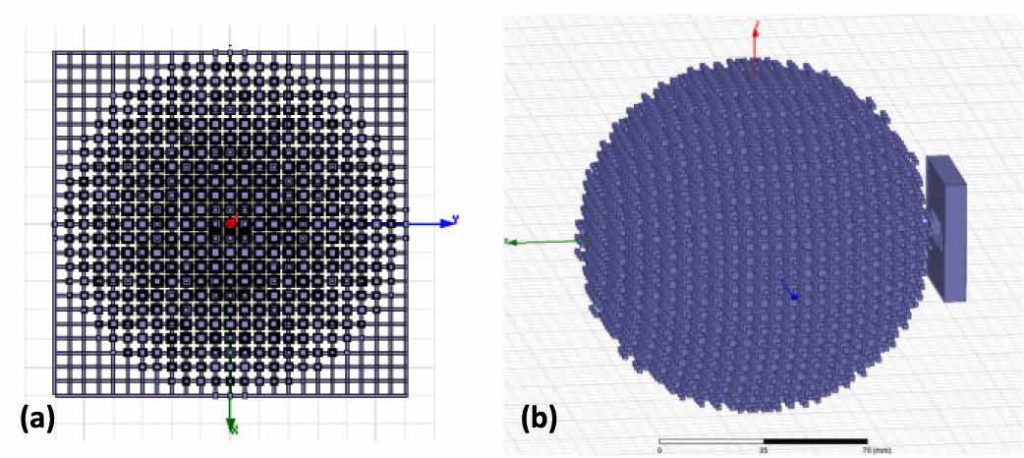Lunewave Inc. is a certified startup from the University of Arizona (UA) devoted to the development of next generation sensor technologies. Its proprietary products are 3D printed Lüneburg lens antennas, capable of providing wireless communications and sensing.
Fabricated by atypical means, the lenses provide a low-cost, custom-made alternative to conventional antenna design. The inventors say that these devices “will be a key enabler for future autonomous driving applications”.
An all-round view
With a spherical shape, Lüneburg lenses offer a 360 degree view of the world around them. They are named after Rudolf Lüneburg, a professor in mathematics, who first proposed the design in 1944.
The lenses effectively read distances by channeling electromagnetic waves, e.g. visible light, microwaves, infrared, through their core.

Surround sensing, even in the rain
The lenses made by Lunweave are 3D printed using a polymer-jetting technique incorporating electromagnetic crystals into the structure.
In comparison with other sensing technologies, such as LiDAR and radar, Lunewave’s lenses are less sensitive to adverse weather conditions.
The method of production also makes the Lüneburg lenses less expensive to produce than other sensors, and Lunewave founders hope that this will help add smart-sensing capabilities to lower-end cars.

Eyes on the road
The project at UA has received validation from a National Science Foundation through a Phase 1 grant.
The sum awarded is specifically for the research and development of a “high performance, high value automotive radar sensor system for autonomous driving applications” using the 3D printed Lüneburg lenses. Says Bob Sleeper, TLA licensing manager at UA College of Engineering.
“Lunewave has the technology and leadership to significantly change the way connected and autonomous vehicles ‘see’ the world around them.”
The company is also backed by the Tech Launch Arizona (TLA) startup initiative.
Sleeper adds, “Lunewave has the technology and leadership to significantly change the way connected and autonomous vehicles ‘see’ the world around them.”
“The UA is excited for their future as they grow and apply this technology to the much broader internet-of-things market.”
Professor Hao Xin, one of Lunewave’s co-founders, explains that the lenses “will be a key enabler for future autonomous driving applications.”
Form meets function
Though a relatively common approach for the aerospace industry, Lunewave’s 3D printed antennas appear to have the edge for more widespread adoption.
One of the company’s co-founders Steven Wood explains, “No longer do customers have to accept broadband ‘one size fits all’ antennas. With Lunewave’s novel design, antennas are custom-made for specific operating frequencies and bandwidths.”
A paper on polymer jet 3D printed lenses at the University of Arizona was presented at Proceedings of the IEEE April 2017 and can be viewed online here.

Don’t miss out on the latest 3D printing research projects and startups. Sign up to the 3D Printing Industry newsletter, and find us on Facebook and Twitter.
Sign up for your next career move on our 3D printing jobs site.
Featured image: Could this be the future eye of autonomous vehicles? A 3D printed Lüneburg lens. Photo via Lunewave Inc.



